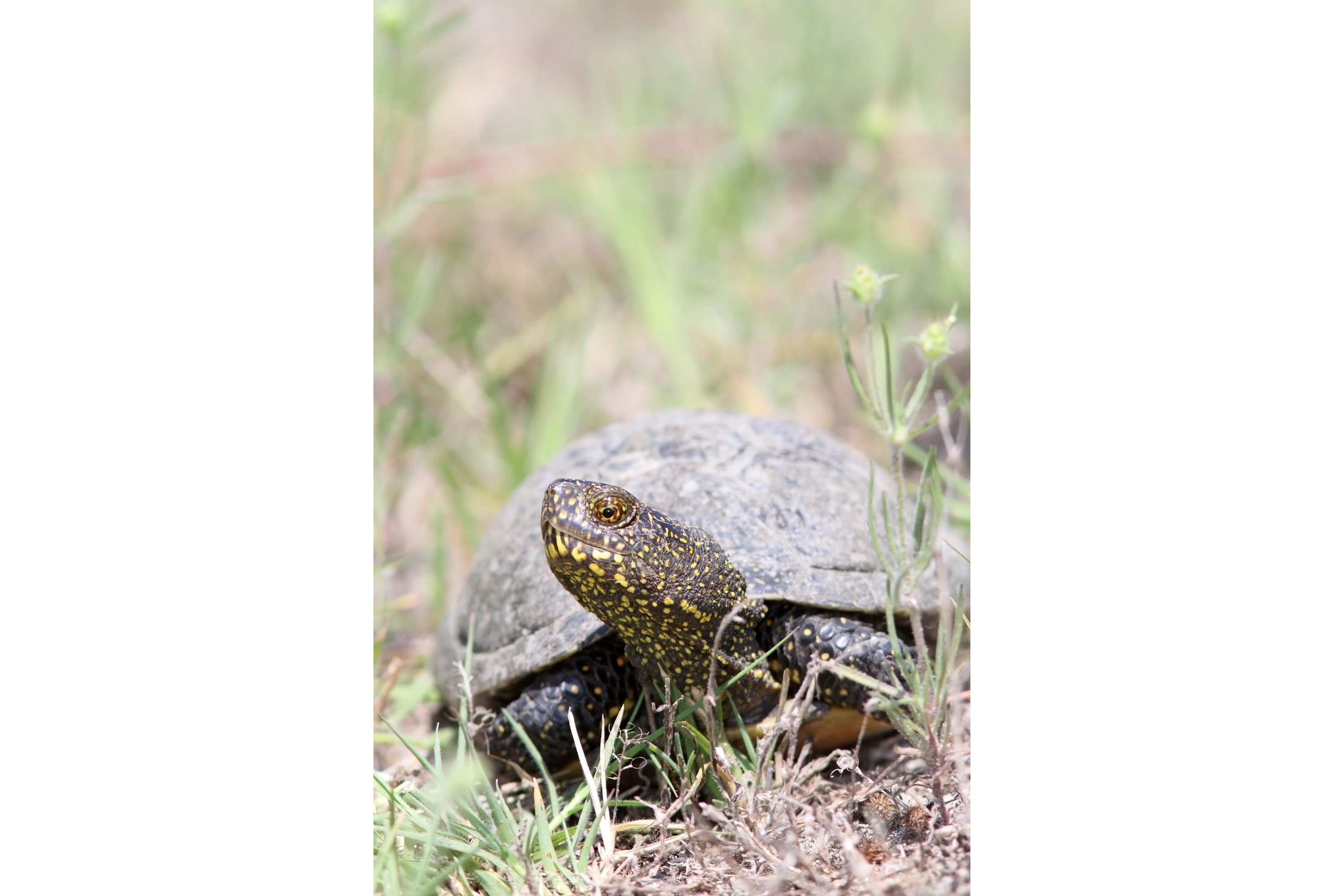European pond turtle
(Emys orbicularis)

Description
The European pond turtle (Emys orbicularis), also called commonly the European pond terrapin and the European pond tortoise, is a species of long-living freshwater turtle in the family Emydidae. The species is endemic to the Western Palearctic. The subspecific name eiselti is in honor of Viennese herpetologist Josef Eiselt (1912–2001). The subspecific name fritzjuergenobsti is in honor of German herpetologist Fritz Jürgen Obst (1939–2018). The subspecific name lanzai is in honor of Italian herpetologist Benedetto Lanza. E. orbicularis is found in southern and central Europe, West Asia and North Africa. In France, there are six large remaining populations, all deteriorating; it is the most endangered reptile of the country. In Switzerland, the European pond turtle was extinct at the beginning of the twentieth century and reintroduced since 2010. In the early post-glacial period, the European pond turtle had a much wider distribution, being found as far north as southern Sweden and the UK, where a reintroduction has been proposed by Celtic Reptile & Amphibian. E. orbicularis prefers to live in wetlands surrounded by a large proportion of natural, wooded, landscape. It also feeds in upland environments. It is usually considered semi-aquatic, as its terrestrial movements can span 1 km (0.62 mi), and it is occasionally found travelling up to 4 km (2.5 mi), away from the water. The European pond turtle is a medium-sized turtle, and its straight carapace length varies quite a bit across its geographic range, from 12 to 38 cm (4.7 to 15.0 in). The carapace is dark brown to blackish, with a hint of green. The head and legs are spotted with yellow. The plastron is yellowish. An important factor that affects the development of E. orbicularis is temperature and thermal conditions. It has been reported that differential growth rates of the same species occur, including variation of body size and clutch size, because of varying temperatures in certain areas. Due to evident patterns of sexual dimorphism, E. orbicularis adult males are always found to be smaller than females. In males, smaller plastra offer them a wider mobility compared to females. In females, due to their differential diet and foraging habits, there may be a correlation to an adaptive effect on their skull and head morphology.
Taxonomic tree:







